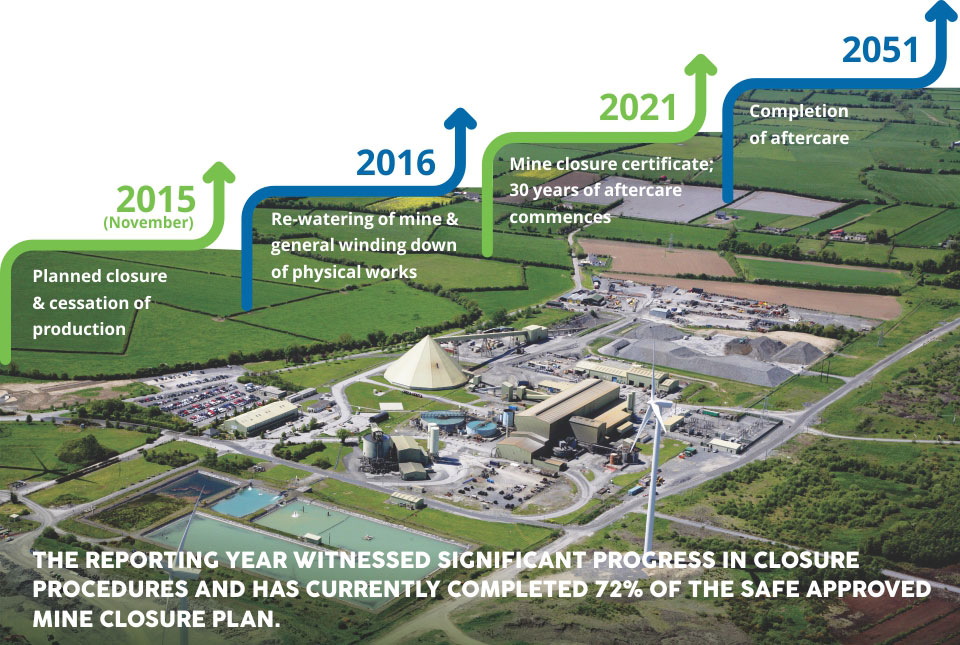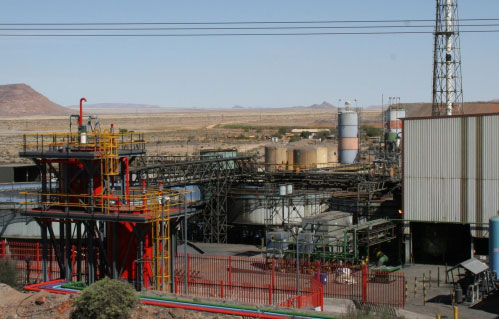360° PROJECT MANAGEMENT


Striking a balance between economic growth and social well-being is intrinsic to the Indian enterpreneur. In India, business-driven social initiatives have existed since centuries, and have resulted in institutions and centres of excellence that have stood the test of time. This concern for holistic growth and development is also ingrained in Vedanta's core values, in the form of Integrity, Respect and Care.
AT VEDANTA, IT IS OUR CONTINUING ENDEAVOUR TO MINIMISE ANY NEGATIVE IMPACT ON COMMUNITIES AND OUR PLANET THAT ARISES AS A RESULT OF OUR OPERATIONS. SUSTAINABLE DEVELOPMENT IS AT THE CORE OF ALL OUR BUSINESS DECISIONS ACROSS EVERY STAGE OF ALL OUR PROJECTS. THE LIFECYCLE OF ALL OUR PROJECTS IS STRICTLY GOVERNED BY OUR SUSTAINABLE DEVELOPMENT FRAMEWORK.
Our Sustainable Development Framework is aligned to international benchmarks such as ICMM and IFC and includes sveeral standards requiring comprehensive impact assessment on environment, social, economic and regulatory fronts. The sustainability standards ensure continuous monitoring and due diligence appraisals in project management, new projects, potential acquisitions, and site closure.
NEW PROJECTS
For us, a new project is not just a means of adding more value to the shareholders. It is a responsibility to add value to the host countries, their biodiversity and the local communities. This helps us maintain the perferred social license to operate. Prior to developing new projects, we undertake location specific needs assessment studies and analyse the project from its exploration stage to closure, to identify potential impacts and the likely affected parties.
NEW PROJECTS BEGIN WITH STAKEHOLDER ENGAGEMENTS
Effective stakeholder engagement is key to successful project management. Every project has a systematic process laid down to examine the impending effects due to the variation in demography, local culture, customs and methods of communication. We have standards which imply to Free Prior Informed Consent from indigenous communities prior to the commencement of a project. We liaise with the local communities as early as possible in the project life cycle to identify the unique nature of these challenges, assess them and respond to any potential issues, conflicts or concerns.
To increase the efficiency of our engagement initiatives, we involve community leaders, government representatives or other third-party mediators to enhance the reach and results of our communications and foster greater transparency and trust between the Company and communities.
ASSESSING RISKS AT EVERY STAGE
Prevention is better than cure; and so is comprehensive risk assessment crucial in averting any undesiarble environmental or social impact. Risk screening makes our sustainability framework stronger; and mitigation strategies, more responsive and effective. Environmental and Social Impact Assessments (ESIA) process is followed for all new projects, to help us ensure projects are properly de-risked, and successfully obtain and sustain their license to operate.
These assessments encompass the full scope of sustainability issues including resettlement, indigenous people (vulnerable groups), and significant loss of cultural heritage, human rights, biodiversity, transboundary/cumulative risks and overall sustainability impact. The ESIA helps identify the communities likely to get affected early in the project cycle facilitating mitigation measures through mutually agreeable solutions.
SITES CURRENTLY UNDERGOING EXPANSION
For us, a new project is not just a means of adding more value to the shareholders. It is a responsibility to add value to the host countries, their biodiversity and the local communities. This helps us maintain the perferred social license to operate. Prior to developing new projects, we undertake location specific needs assessment studies and analyse the porject from its exploration stage to closure, to identify potential impacts and the likely affected parties.
HINDUSTAN ZINC LIMITED AND VEDANTA ZINC INTERNATIONAL
Rampura Agucha Mine | Rajasthan
The world's largest Zinc mine HZL-Rampura Agucha is also the largest zinc producer in India with a market share of 79.1%. The mine has a current capacity of 1 million tonnes of Zinc-lead. An underground expansion programme has been initiated to increase the production capacity to 1.2 million tonnes per annum. Site exploration will be the primary focus tool for the expansion.
Sindesar Khurd | Rajasthan
It is a world-class underground mine with state-of-the-art infrastructure facilities and best-in-class mechanisation. As part of the on-going expansion programme, ore production capacity at Sindesar Khurd Mine will be increased to 6.0mn MT per annum by FY 2018-19. The Environmental Impact Assessment is under progress and Environment Clearance is expected by February 2018.
Zawar Group of Mines | Rajasthan
As part of the on-going expansion programme, ore production capacity will be increased to 4 mn MT per annum for which the HZL received an environment clearance this year.
Black Mountain Mining | South Africa
The shaft is going to be deepened post relevant risk assessments, increasing the production to 1.6Mtpa of copper and lead ore and 60ktpa to 70ktpa of Metal-in-Concentrate (MIC). Expansion plans are also underway.

SITE CLOSURE
Our commitment to the communities extends beyond the closure of the operations. A mine closure is in fact the beginning of a comprehensive and well-designed aftercare process that enriches not only the local communities but also the restoration of natural habitat and ecosystems.
The mutually agreed solutions to the environmental and social risks identified through the Environmental and Social Impact Assessment (ESIA) at the onset of every project also include the Site Closure Plans. Our Sustainable Development Framework includes a Site Closure Standard, which is continually aligned and updated to match the international good practices benchmark.
THE AFTERCARE FOR A BETTER TOMORROW | LISHEEN MINES, IRELAND
From its initial discovery in 1990 throughout its planning, construction, operation and now closure, Lisheen Mine has been a world-class operation, implementing the highest international standards throughout the entire mine life cycle. The commitment of Lisheen went beyond the implementation of the physical closure of the site. The mine aftercare programme ensures that a comprehensive plan is in place.
Lisheen Mines operations ceased in November 2015. In alignment with our sustainability standards we initiated the comprehensive Closure, Restoration and Aftercare Management Plan (CRAMP) and assigned a dedicated committee overseeing the implementation and progress of the mine closure plan.
A few milestones achieved are as under:
All potentially hazardous materials have been removed from the underground working areas
Re-watering of the mine which commenced on 31st December 2015 is ahead of schedule and consequently, the groundwater level has increased from 200m below ground level to 7m below ground level across the area that was impacted by dewatering
A good sustainability practice was initiated with the dismantling and re-erection of the concentrator building at a new purchaser site
Areas that were at a risk of soil contamination are being stripped and the removed material is being disposed of at the Tailings Management Facility
VEDANTA AND LISHEEN TOP MANAGEMENT HAVE A VISION BEYOND THE CLOSURE OBJECTIVE TO ESTABLISH A “BIO-ECONOMY CAMPUS” – A REPLACEMENT INDUSTRY THAT PROVIDES REPLACEMENT JOBS AND SUSTAINABLE GROWTH.
All entrances to the underground workings have been permanently sealed through proper and timely implementation of the capping programme
74% of the Tailings Management Facility has been capped and rehabilitated to farmland pasture. The TMF will be fully rehabilitated by the end of 2017
The outplacement programme for the employees has been successfully implemented where most of them have moved seamlessly into new jobs

